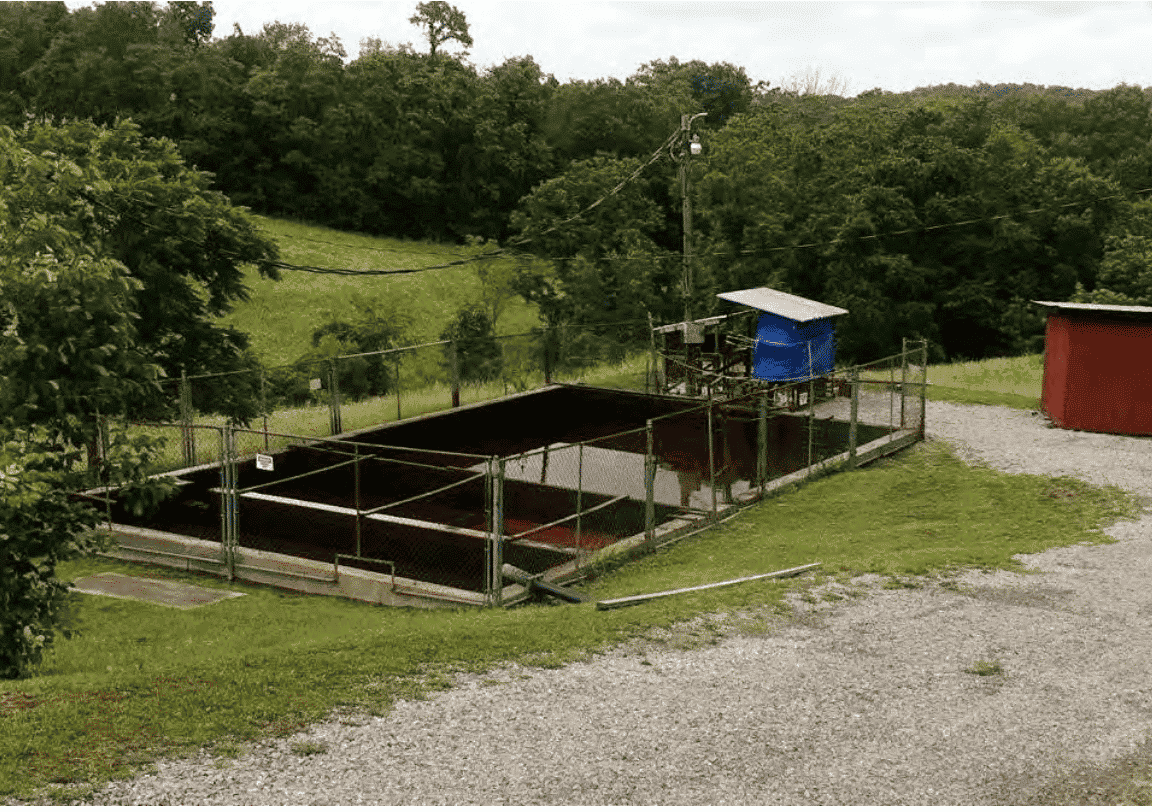
Toxic Waste Will Continue to Grow for Decades Even if All U.S. Drilling and Fracking Halts Today, New Report Says

A fuel truck carries fuel into a fracking site past the warning signs Jan. 27, 2016 near Stillwater, Oklahoma. J Pat Carter / Getty Images
By Jessica Corbett
For more than three decades, the U.S. government has mismanaged toxic oil and gas waste containing carcinogens, heavy metals and radioactive materials, according to a new Earthworks report — and with the country on track to continue drilling and fracking for fossil fuels, the advocacy group warns of growing threats to the planet and public health.
“Even if we stop all new drilling and fracking immediately, the flood of toxic waste streams will continue to grow for decades,” Melissa Troutman, the report’s lead author, said in a statement Tuesday. “In spite of industry claims of innovation, the risks from oil and gas waste are getting worse, not better.”

Truck spreading brine in New York.
No Fracking Way.
Building on a 2015 Earthworks analysis, Still Wasting Away details congressional and U.S. Environmental Protection Agency (EPA) actions as well as industry lobbying related to the federal rules for liquid and solid waste from fossil fuel development.
“Despite over 30 years of research about the toxic impacts of the industry’s waste, it is far from being handled properly,” the report says. “There is little consistency in tracking, testing, and monitoring requirements for oil and gas waste in the United States.”
“At all stages of the oil and gas waste management process,” the report explains, “toxins can enter the environment accidentally (spills, leaks, waste truck rollovers, and illegal dumping) or legally under current state and federal law (road spreading, discharge to rivers, landfill leaching).”
Demonstrating the scope of the threat that such waste poses to human health, the report notes that “an estimated 17.6 million Americans live within a mile of oil and gas development, including half of the population in West Virginia and almost a quarter of the population in Ohio.”
The report calls for immediate action from state and federal governments, and offers several policy recommendations to stem mounting risks to water, soil, air and people nationwide.
Even if drilling stopped tomorrow, today’s #OilAndGas wells will continue to produce massive amounts of waste long after the drilling has stopped. Read @Earthworks' report: https://t.co/UnOlyruRJJ pic.twitter.com/r02fhaRmRS
— Pennsylvania Moms (@CleanAirMoms_PA) June 18, 2019
Still Wasting Away features a timeline that tracks federal action on fossil fuel waste management and industry lobbying all the way back to 1976, when Congress enacted the Resource Conservation & Recovery Act (RCRA) that required the EPA to craft rules to identify and manage hazardous waste.
The EPA spent the next few years writing regulations — and fossil fuel lobbyists reportedly got to work trying to influence the agency, which issued a key final decision on industry waste in 1988.
As Earthworks senior policy counsel Aaron Mintzes put it, “Industry lobbyists secured a ‘special’ designation for oil and gas wastes that exempt it from our national hazardous waste safeguards.” Mintzes added that “oil and gas waste is indeed ‘special,’ it is especially toxic, but that means it should require more oversight, not less.”

Storage pit at the Ginsburg injection well, Ohio.
Athens County Fracking Action Network
In 2016, Earthworks and other environmental organizations filed a federal lawsuit against the EPA in a bid to force the agency to more strictly manage fossil fuel waste under the RCRA, and the EPA agreed to a consent decree that required the agency to review and consider revising its rules. In April, the EPA announced that it wasn’t making any changes and that it would allow states to continue spearheading regulation.
“EPA will continue to work with states and other organizations to identify areas for continued improvement and to address emerging issues to ensure that exploration, development, and production wastes continue to be managed in a manner that is protective of human health and the environment,” the EPA vowed on its website.
With the release of Still Wasting Away, Earthworks charged Tuesday that “this report, and others, reveal that EPA and state governments are leaving communities at increased risk for exposure to toxic and carcinogenic oil and gas waste.”
While the Earthworks report details waste management failures under both Democratic and Republican presidents, environmental advocates face an uphill battle in their fight for stricter federal rules under the Trump administration. According to a New York Times tally updated earlier this month, the administration — with help from congressional Republicans — has worked to roll back at least 83 environmental regulations since President Donald Trump took office.
Still Wasting Away will be followed by supplemental reports for nine states that are home to much of the country’s drilling and fracking for fossil fuels: California, Colorado, New Mexico, New York, North Dakota, Ohio, Pennsylvania, Texas and West Virginia.
Reposted with permission from our media associate Common Dreams.

 233k
233k  41k
41k  Subscribe
Subscribe 